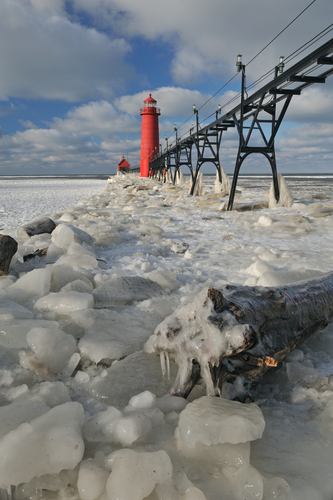Punxsutawney Phil may have predicted an early spring in 2011, but by no means have we seen the end of claims involving pipe freeze-ups and storm-related roofing collapses for the season. Despite the fact that Old Man Winter is not a viable subrogation target, there may be more subrogation potential in these claims than you think. In these situations, it is imperative to involve subrogation counsel from the outset of the investigation.
 Too often, media outlets will assign adjectives to winter weather that lead us to believe it was of an intensity observed only once in a decade, century or lifetime. Rather, it is more often the case that these are average storms for the season and the region. The winds, temperatures and precipitation levels usually are not outliers but instead are within the standard deviation of a winter storm for that region. It is more likely than not, for example, that the amount of snow on the roof which caused it to collapse was actually within the “factor of safety” in the roof’s design specification or local building codes.
Too often, media outlets will assign adjectives to winter weather that lead us to believe it was of an intensity observed only once in a decade, century or lifetime. Rather, it is more often the case that these are average storms for the season and the region. The winds, temperatures and precipitation levels usually are not outliers but instead are within the standard deviation of a winter storm for that region. It is more likely than not, for example, that the amount of snow on the roof which caused it to collapse was actually within the “factor of safety” in the roof’s design specification or local building codes.
Because you will likely face many more of these claims throughout the rest of this winter season, here are a few helpful tips and reminders as you conduct your investigations through the remainder of the season:
1. Preserve the Loss Site. It is all too easy for your target to defend against a subrogation claim based upon the fact that the loss site was spoliated before they had a chance to inspect it. When a loss like a pipe freeze up or structural collapse occurs, it is often catastrophic. Time is therefore of the essence to begin repairs and/or return the structure to a safe condition. For that reason, tip #1 should be undertaken in conjunction with tip #2, 3 and 4.
2. Take Measurements. Precipitation levels and temperatures can very greatly over a short distance. Often, the meteorological data for the region may not accurately represent the actual data at the loss site. It is therefore important to take a measurement of the exact temperature or precipitation levels as close to the moment when the failure occurred as possible. Your expert will help you do this correctly (tip #4).
3. Hire Subrogation Counsel ASAP. Targets may need to be placed on notice. Given the need to quickly begin repairs, this needs to be done promptly. Notice is immediately followed by a joint site inspection. Getting subrogation counsel involved early moves this crucial step along quickly while also guaranteeing that (a) all possible theories of liability are considered early on while the scene is still preserved, (b) communications regarding subrogation potential are better protected from discovery, and (c) the lawyer who will be protecting your subrogation rights is building your case from the very beginning.
4. Get an Expert ASAP. Subrogation counsel can help you identify the best expert for the loss. Often times, a pipe didn’t freeze up just because it was “extremely cold.” Similarly, what seems like a large snow load might still be insufficient to collapse a roof had it been built properly. Getting your expert to the loss site instead of sending them physical evidence to analyze will allow them to identify additional theories of liability. Additionally, they can help you take accurate measurements, discussed in tip #2. Get your experts involved early.
5. Preserve Evidence. In a pipe freeze-up or a roofing collapse case, the failure most often occurs within a component which is part of a much larger system. For example, a pipe freeze-up may be caused by a failure in an HVAC system located on the other side of the building and not due to a deficiency in the pipe itself. A roofing collapse may be caused by a deficiency throughout the entire roof and not just the section of the collapse. Because identifying the correct evidence to preserve in these cases is difficult, get your experts involved early so they may take all necessary photographs and be on site to determine the evidence preservation that is necessary to prove your subrogation case.
6. Get Documents and Statements. Your insureds are often your best resource to figuring out what happened and/or what entities accessed key components to the system that failed and caused the loss. Get statements and supporting documentation, including installation and service records, early on before memories fade and documents disappear.
Most importantly, taking quick action can often heat up your otherwise frozen subrogation claim.



